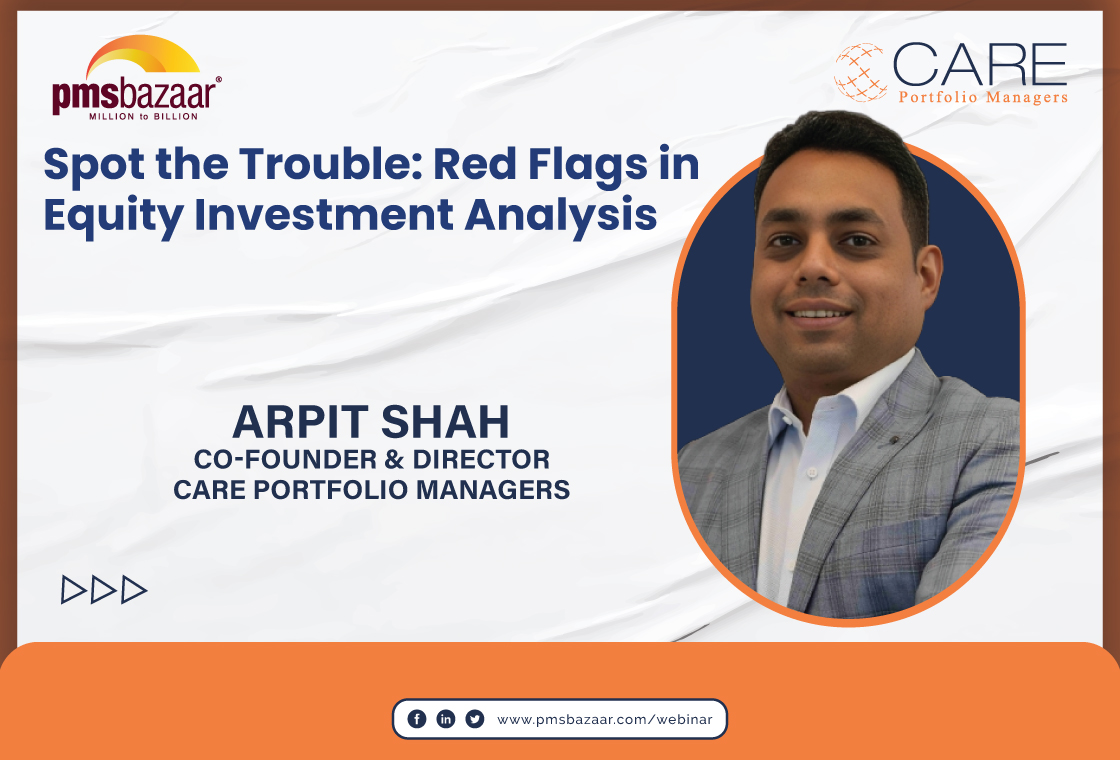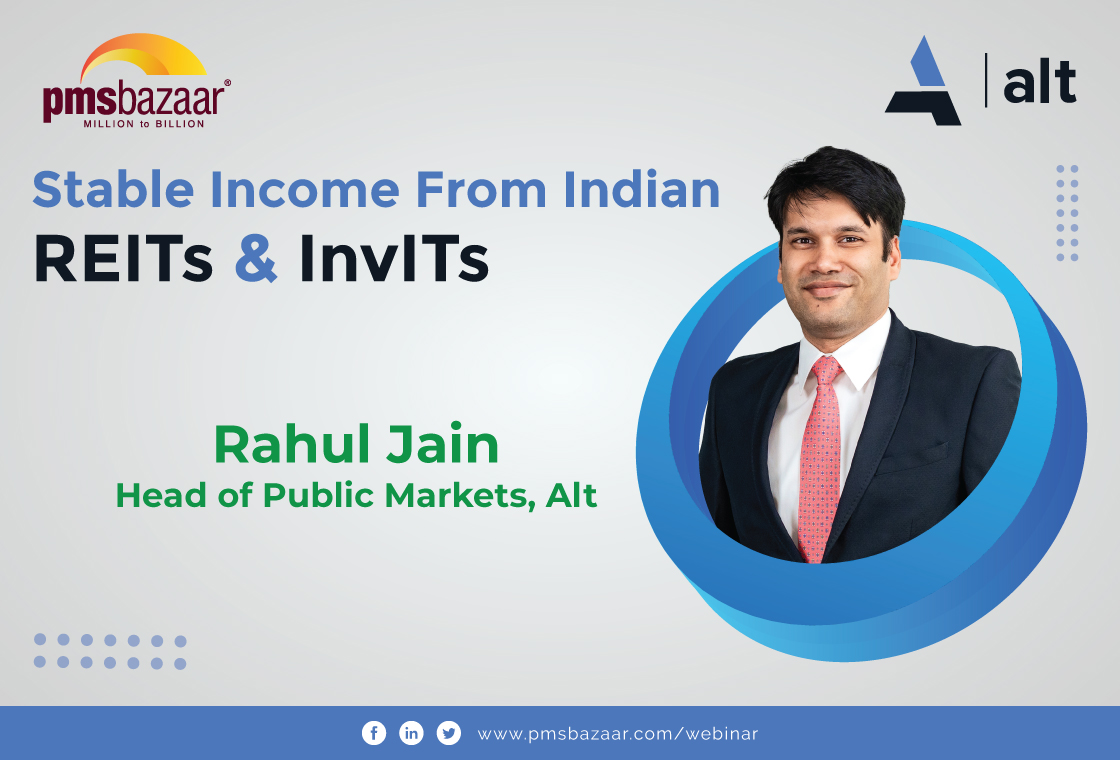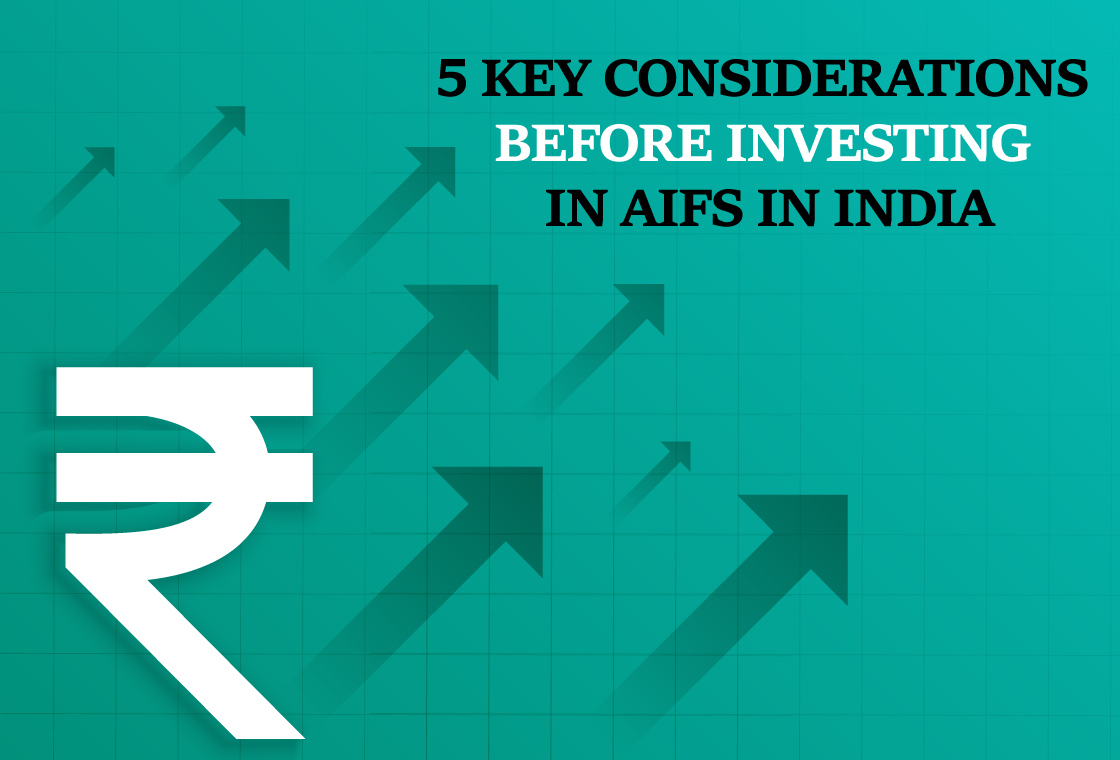PMS Bazaar recently organized a webinar titled “Bridging Performing Credit and Emerging Equity for Balanced Wealth Creation,” which featured Mr. Phanisekhar Ponangi, Co-Founder and CIO, MavenArk Asset Managers Pvt Limited. This blog covers the important points shared in this insightful webinar.

The webinar blog covers insights from Mr. Ponangi, which includes the launch of the MavenArk Credit and Growth Fund, its balanced strategy combining credit and equity, and its focus on India’s BFSI sector. It detailed the fund's team, investment philosophy, risk profile, expected returns, market outlook, India's economic position, and evolving regulatory landscape. It also highlighted opportunities in private credit, secondaries, and co-investments.
Key aspects covered in this webinar blog are
- Bridging India and Bharat
- Strong performance through volatility
- Focus on the BFSI sector
- Private credit: Rising momentum in India
- Investment horizon and portfolio composition
- Attractive returns and investor suitability
- The fragmented global economy and India's position
- India's structural growth story: Enablers and roadblocks
- The growing role of secondaries and co-investments
- Optimal allocation and assessing management integrity
Mr. Phanisekhar Ponangi started by introducing the Mavenark Credit and Growth Fund, an innovative investment solution that blends performing credit and emerging equity. The goal is to deliver high, risk-adjusted returns through a strategic, balanced approach. He stressed the importance of mobilising domestic capital for local impact. Historically, areas like financial inclusion have attracted foreign funding. Mavenark seeks to change this by engaging Indian investors in India’s transformation, combining financial returns with measurable societal outcomes.
The fund is managed by a seasoned team, who bring credibility, deep sector knowledge, and a proven track record. The team has consistently delivered 12%+ returns across different cycles, including demonetisation, the IL&FS crisis, and the pandemic—without any credit event or repayment delays. This performance was primarily achieved through primary market credit investments, giving them better risk control.
Focus on the BFSI Sector
Mavenark’s core investment theme is centred around the Banking, Financial Services, and Insurance (BFSI) sector, which contributes significantly to India’s GDP and market capitalisation. Mr. Ponangi highlighted the rapid growth of private credit in India, driven by the retreat of banks from corporate lending. This has opened avenues for funds to support long-term projects, M&As, and special situations. The fund focuses on two BFSI verticals:
- Balance Sheet Businesses: Including banks, NBFCs, housing finance, SME lending, microfinance, and vehicle finance.
- Fee-Based Income: Equity opportunities in life insurers, stock exchanges, AMCs, wealth managers, and credit agencies.
Investments will primarily target Series B+ rounds, pre-IPO, and listed companies with near term listing potential. Positioned as a mid-risk alternative, the fund is less risky than pure equity funds and slightly riskier than venture debt. However, the team believes the selected equity assets carry lower effective risk than high-yield debt. With a 5–6-year horizon, the fund targets quicker returns compared to traditional PE models. Portfolios will include 12-15 credit and 10-12 equity names, filtered from an initial pool of 100+ companies. The fund aims to offer monthly cash flows of 45-50 basis points, translating to ₹45,000–50,000/month on a ₹1 crore investment, growing the corpus to ₹1.75–2.25 crore in five years.
The Fragmented Global Economy and India's Position
When asked about the current global macroeconomic environment and the business cycle, Mr. Ponangi stated that the global economy is in an unprecedented state, incomparable to previous cycles. He attributed this to tariff uncertainties, which have fragmented the global economy into distinct blocks. He expressed confidence that India remains largely unaffected by developments in the U.S. due to the growing importance of alternative currencies and increasing uncertainty within U.S. markets.
He further elaborated that unlike past cycles where capital would rush to the U.S. during uncertainty, investors are now adopting more regional, fragmented views. India, in particular, is being viewed as a "China Plus One" strategy for manufacturing and services. He highlighted India's proven leadership in services and the immense consumption potential as its per capita income rises, leading to high valuations in India's consumption and FMCG sectors. Mr. Ponangi concluded by expressing strong bullishness on India's economic cycle over the next five years, emphasizing the country's rapid strides towards self-sufficiency.
India's Structural Growth Story: Enablers and Roadblocks
Addressing India's perception as a structural growth story, Mr. Ponangi identified demographics as India's biggest enabler. He also pointed to the country's proven leadership in the services sector, especially IT, and its increasing momentum in manufacturing exports. While acknowledging that exports would not dominate India's economy, he predicted their percentage of GDP would rise. He reaffirmed India's identity as a consumption-driven economy, a factor that provides inherent buoyancy.
On the other hand, Mr. Ponangi identified potential roadblocks. He suggested that India might face labour un-competitiveness in the long run, similar to China's current experience. He cautioned against focusing on low-tech manufacturing, suggesting that India's future lies in high-tech sectors like AI, data science, semiconductors, and fabs. He expressed satisfaction with India's progress in these areas. He also emphasized that regardless of broader economic shifts, the BFSI sector is poised for continuous growth due to India's consumption-driven nature and the increasing commodity wealth, which fuels social sector spending and, consequently, financial services.
The Growing Role of Secondaries and Co-investments
Regarding the role of secondaries and co-investments in private markets, Mr. Ponangi acknowledged their importance in improving liquidity and reducing "blindfold risk." He noted that while the secondaries market in India is still developing, primarily because many funds lack sufficient vintage, he believes it is set for significant growth. He asserted that these avenues reduce blindfold risk by expanding investment options and catering to various risk, return, and tenor preferences, ultimately benefiting investors.
Regulatory Evolution and the Credit Market Outlook
When asked about the regulatory evolution in Indian private markets, Mr. Ponangi praised the regulator's proactive approach in embracing reforms, even if they sometimes take longer than desired. He highlighted the exponential growth in private market commitments, from INR 80,000 crores five to six years ago to INR 14 lakh crores today, as clear evidence of effective regulatory frameworks.
Looking at the Indian credit markets in the medium to long term, Mr. Ponangi stated they have nowhere to go but up. He explained that banks have largely withdrawn from corporate credit to focus on retail and working capital needs. This shift has directed a significant portion of corporate credit requirements including long-term financing, M&A, special situations, and PE buyouts—to private credit and special situation funds. He views this as a win-win, as capital is now being more efficiently allocated, with investors receiving commensurate returns based on their risk appetite.
Optimal Allocation and Assessing Management Integrity
Delving into Mavenark's strategy, Mr. Ponangi explained that regulatory requirements mandate a minimum 51% allocation to private credit in their fund, emphasizing capital preservation. Within this framework, they dynamically allocate between private credit and emerging equity based on market opportunities and risk assessment. He noted that while balance sheet-based BFSI businesses have higher beta (more cyclical), fee-based businesses tend to have lower beta (more stable), allowing for intelligent portfolio construction to optimize risk-adjusted returns.
On assessing management integrity beyond corporate governance frameworks, Mr. Ponangi highlighted several "soft checks." These include scrutinizing board composition, shareholder rights, the independence of independent directors, and the authority vested in key positions like the CFO or treasury heads. He added that Mavenark's extensive experience in financial markets, including investment banking, provides them with invaluable insights into the track records and management styles of CXOs.
Differentiating BFSI Segments and Current Market Opportunities
Mr. Ponangi distinguished between balance sheet businesses (banks, NBFCs) and fee-based income businesses (credit rating agencies, AMCs, wealth managers) within BFSI. He noted that balance sheet businesses are more cyclical and leveraged, leading to higher equity volatility. In contrast, fee-based businesses are generally unleveraged and benefit from longer-term trends, such as growing economic activity or the shift from physical to financial savings.
Currently, Mr. Ponangi sees excellent opportunities in both the equity and fixed-income components of the BFSI sector. He observed that while other market pockets are "buying the rumour" (speculating on future growth), the BFSI sector is "selling the news," meaning it is currently undervalued due to recent challenges. This presents a Favorable entry point for long-term value investors, as valuations are below historical averages and yields have risen.
Liquidity and Taxation for Investors
Addressing specific investor queries, Mr. Ponangi clarified the taxation on income from the fund. For fixed income, coupon income is subject to marginal taxation, while capital gains are subject to STCG/LTCG norms. For equity, short-term or long-term capital gains are passed through to the investor for tax planning.
Regarding the liquidity profile of performing credit investments, Mr. Ponangi stated that while units are in Demat form and MavenArk can assist clients in selling them, the product is primarily designed as a locked-in investment. He advised investors to commit only capital they can spare for at least five years, as liquidity is lower than that of mutual funds.
Mr. Ponangi covered all the topics mentioned above in-depth and answered questions from the audience toward the end of the session. For more such insights on this webinar, watch the recording of this insightful session through the appended link below.
Get access to rich data and analytics of PMS & AIF by subscribing to us. Join the 75000+ investors & experts: Subscribe NOW
Disclaimer: This Blog is made for informational purposes only and does not constitute an offer, solicitation, or an invitation to the public in general to invest in any of the Funds mentioned. All the Returns mentioned in this blog are provided by the respective asset management companies and may vary based on their reporting structure (Pre-tax, Post-tax, Post-expenses, etc.). PMS Bazaar has taken due care and caution in the compilation of data and information. However, PMS Bazaar doesn’t guarantee the accuracy, adequacy, or completeness of any information. Investors must read the detailed Private Placement Memorandum (PPM), including the risk factors, and consult your Financial Advisor before making any investment decision/contribution to AIF. This Blog has been prepared for general guidance, and no person should act upon any information contained in the document. PMS Bazaar, its affiliates, and their office, directors, and employees shall not be responsible or liable for any investment action initiated. This Blog is intended only for the personal use to which it is addressed and not for distribution.
Recent Blogs
.jpg)
Passively Active Investing — A Modern Investor’s Lens on ETF-Based PMS
PMS Bazaar recently organized a webinar titled “Passively Active Investing — A Modern Investor’s Lens on ETF-Based PMS,” which featured Mr. Karan Bhatia, Co-Founder and Co-Fund Manager , Pricebridge Honeycomb ETF PMs. This blog covers the important points shared in this insightful webinar.

Spot the Trouble: Red Flags in Equity Investment Analysis
PMS Bazaar recently organized a webinar titled “Spot the Trouble: Red Flags in Equity Investment Analysis,” which featured Mr. Arpit Shah, Co-Founder & Director, Care Portfolio Managers. This blog covers the important points shared in this insightful webinar.

Long-Only AIFs Rebound Sharply in October; Long-Short Strategies Lag Despite Lower Volatility
106 long-only AIFs averaged 3.68% vs 32 long-short AIFs at 2.7%; only 24–31% of funds beat key indices

Markets log strongest monthly gains in 7 months; PMS performance turns near-uniform in October
Nifty 50 TRI gained 4.62%, BSE 500 TRI rose 4.27%; 415 of 427 equity PMSes ended positive

How SMEs are Shaping India’s Investment Landscape?
PMS Bazaar recently organized a webinar titled “How SMEs are Shaping India’s Investment Landscape?” which featured Mr. Shrikant Goyal, Fund Manager, GetFive Opportunity Fund.

Stable Income from Indian REITs and InvITs
PMS Bazaar recently organized a webinar titled “Stable Income from Indian REITs and InvITs,” which featured Mr. Rahul Jain, Head of Public Markets, Alt.

5 Key Considerations Before Investing in AIFs in India
Alternative Investment Funds (AIFs) have emerged as a compelling option for sophisticated investors seeking diversification and potentially superior returns. But venturing into AIFs requires a clear understanding of their unique characteristics that go beyond simply knowing what they are and their categories.

How AIF can help in diversification?
Traditionally, Indian investors have relied on a mix of stocks and bonds to build their wealth. While this approach offers diversification, it can still leave your portfolio vulnerable to market fluctuations. Enter Alternative Investment Funds (AIFs), a dynamic asset class gaining traction for its ability to unlock diversification beyond the realm of conventional options.

